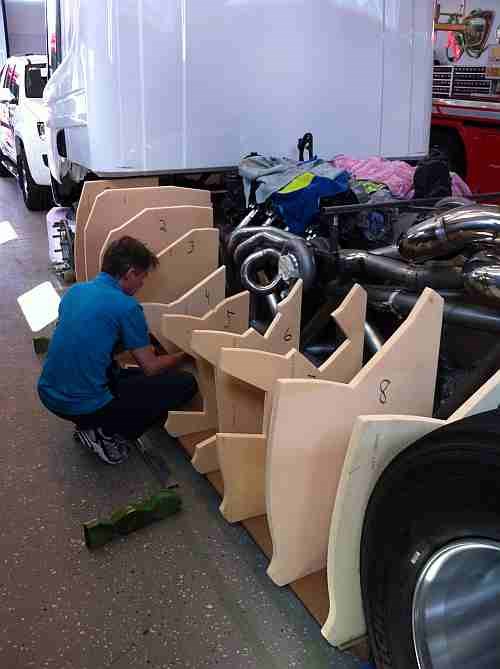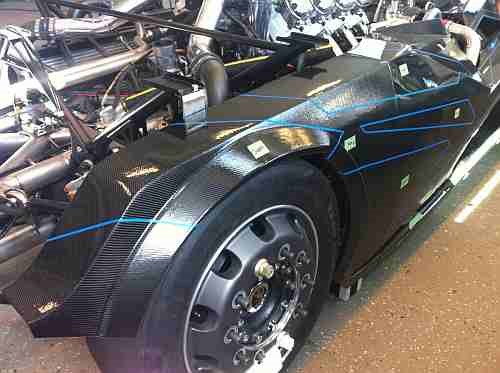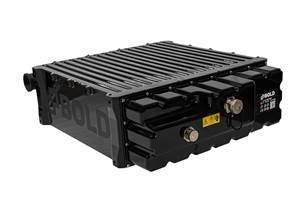Swedish show truck turns heads
Fifty-one years ago, Swedish car mechanic Sven-Erik Bergendahl, nicknamed Svempa, started his tow truck business with a 1957 Plymouth sedan that he transformed into a truck, and since then, Svempa has created eye-catching and souped-up tow vehicles for car and truck shows across Europe.

The Chimera show truck from Svempa and Scania is a hit at car shows in Europe.
Hot-rodding might have started in the US, but it has devout adherents around the world. Fifty-one years ago, Swedish car mechanic Sven-Erik Bergendahl, nicknamed Svempa, started his tow truck business with a 1957 Plymouth sedan that he transformed into a truck, and since then, Svempa has created eye-catching and souped-up tow vehicles for car and truck shows across Europe.
In mid 1980s, Svempa and designer Jan Richter started a partnership with Swedish truck and engine manufacturer Scania to produce modified Scania trucks for shows, and the results are highly-anticipated fan successes. A recent project, dubbed Chimera, may be Bergendahl’s and Richter’s most ambitious and complex yet. Begun in early 2010, Chimera took 4 years to complete, and involves considerable composite design and materials. Richter is a friend of Ragnar Friberg, who was the source of an earlier blog about a high-end champagne flute (http://www.compositesworld.com/blog/post/not-your-average-carbon-fiber-part) and who participated in the work. The Chimera project took more than 3000 hours from first design to finish, and the vehicle is continually being optimized, says Richter. “The truck consisted of a stainless steel tubular frame with attached truck cab, front and rear axles with 4 wheels, V8 Scania engine with power train, 6 turbos, radiators, intercoolers and exhaust piping,” explains Richter. “When planning the composite body we had to take into account the heat coming from the Scania turbo-charged 16-liter V8.”
Using Richter’s drawing, Svempa workers fabricated a cardboard mockup of the bodywork, to assess aerodynamics, overall appearance and the best approach for molding the parts. They came up with five composite sections: two would cover the left and right sides of the engine, between the front and rear wheels; two would cover the left and right (front) wheels, and connect with the fifth section, at the front of the cab.

Ragnar Friberg works on the foam core ribs that shaped the composite side skirts.
Detailed measurements were taken and a series of ribs were waterjet-cut from pieces of Divinycell, Matrix MX 7-7, 25mm thick, with a density 55Kg/m3, supplied by DIAB. Friberg then “dressed” the ribs with 10mm-thick core material (same density as the 25mm) and glued the pieces to the ribs with a 30-minute cure epoxy mixed with Wacker Aerosil as a filler, which, he says, made the foam structure durable and easy to grind to final shape.
Prior to lamination, the core material was covered with an epoxy putty mixed with a thixotrope, necessary, says Friberg, to prevent the foam core from absorbing any laminating resin and becoming too heavy. The sandwich skins, inner and outer, were created with one layer of 290-g/m, 2x2 E-glass twill supplied by Hexcel, followed by a second layer of 245-g/m, 2x2 3K carbon fiber twill from AKSACA, in a hand layup process that carefully ensured the material accommodated the bodywork curves. Epoxy resin, together with a hardener that provided a 90-minute outtime, was supplied by Nils Malmgren AB. Parts were oven-cured at 60°C for 10 hours.

A view of the carbon and glass laminate.
Composite part weights totaled 41.5 kg, saving 1,500 kg compared to a production Scania truck of the same size with a steel body. Says Richter, “About 1300 hours were spent to build the truck body, not counting the paint job, and total cost was about $800,000 USD.” He adds that the goal was a contemporary, even futuristic-looking, race truck, to complement Svempas’ earlier, retro-inspired Red Pearl show truck: “Our priority was really more to display the engineering and the powerful V8 engine and turbos. The biggest challenge was setting up the frame and suspension to handle the weight of the powertrain and unsprung parts.”
The truck has now appeared at several European truck events, with very positive fan love. There are many YouTube videos related to Svempa trucks, including the Chimera: https://www.youtube.com/watch?v=zUbo0wsruew and https://www.youtube.com/watch?v=e5uTmXz2VIs. This video features the more retro-inspired Red Pearl show truck: https://www.youtube.com/watch?v=2LzwCtm6JmQ. Check out this article about the Chimera, posted by Mack Trucks: http://www.bigmacktrucks.com/topic/36667-the-dream-truck-builder%E2%80%99s-latest-creation/.
Related Content
Aviation-specific battery system uses advanced composites to address electric, hybrid flight
BOLDair’s composite enclosure, compression structures and thermal runaway management enables high-performance electric energy storage.
Read MoreFilament winding increases access to high-performance composite prostheses
Steptics industrializes production of CFRP prostheses, enabling hundreds of parts/day and 50% lower cost.
Read MoreCarbon fiber composite pallet revolutionizes freight industry
LOG Point Pallet fuses advanced materials with innovative design and manufacturing to improve supply chains worldwide.
Read MoreOtto Aviation launches Phantom 3500 business jet with all-composite airframe from Leonardo
Promising 60% less fuel burn and 90% less emissions using SAF, the super-laminar flow design with windowless fuselage will be built using RTM in Florida facility with certification slated for 2030.
Read MoreRead Next
Ultrasonic welding for in-space manufacturing of CFRTP
Agile Ultrasonics and NASA trial robotic-compatible carbon fiber-reinforced thermoplastic ultrasonic welding technology for space structures.
Read MoreNext-gen fan blades: Hybrid twin RTM, printed sensors, laser shock disassembly
MORPHO project demonstrates blade with 20% faster RTM cure cycle, uses AI-based monitoring for improved maintenance/life cycle management and proves laser shock disassembly for recycling.
Read MoreCutting 100 pounds, certification time for the X-59 nose cone
Swift Engineering used HyperX software to remove 100 pounds from 38-foot graphite/epoxy cored nose cone for X-59 supersonic aircraft.
Read More






















